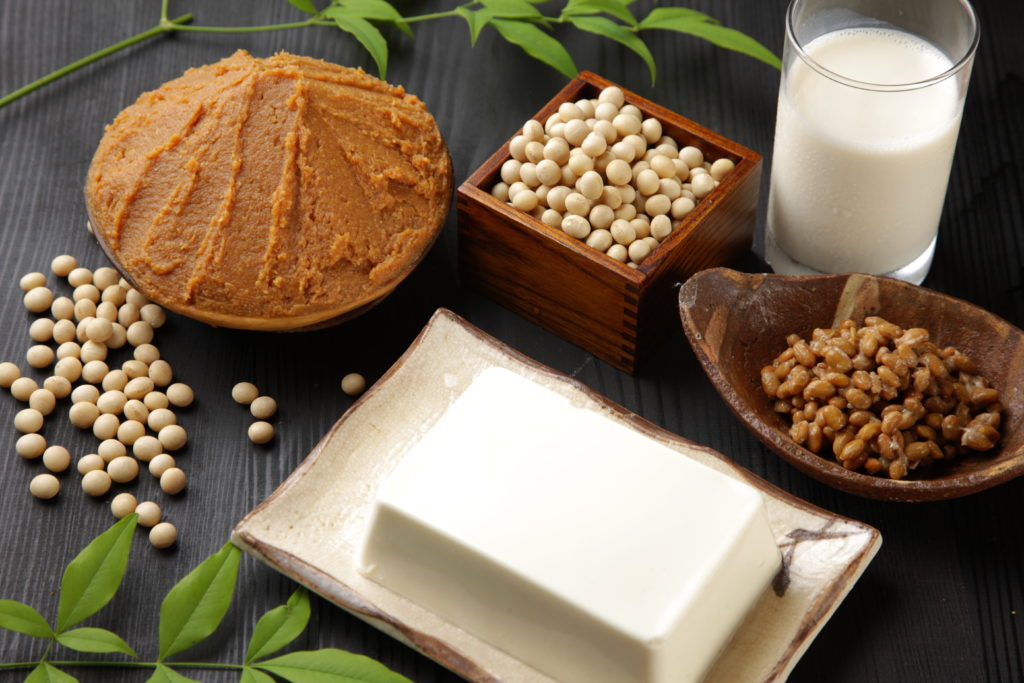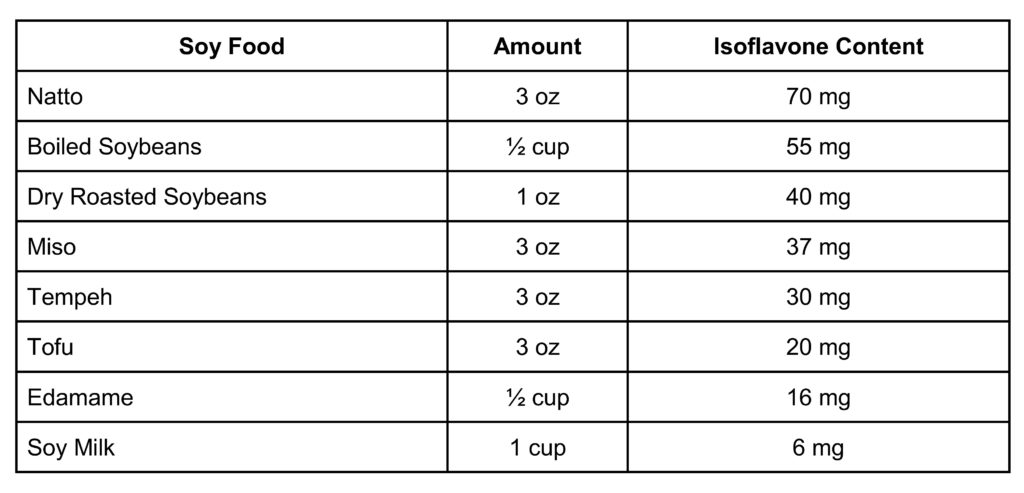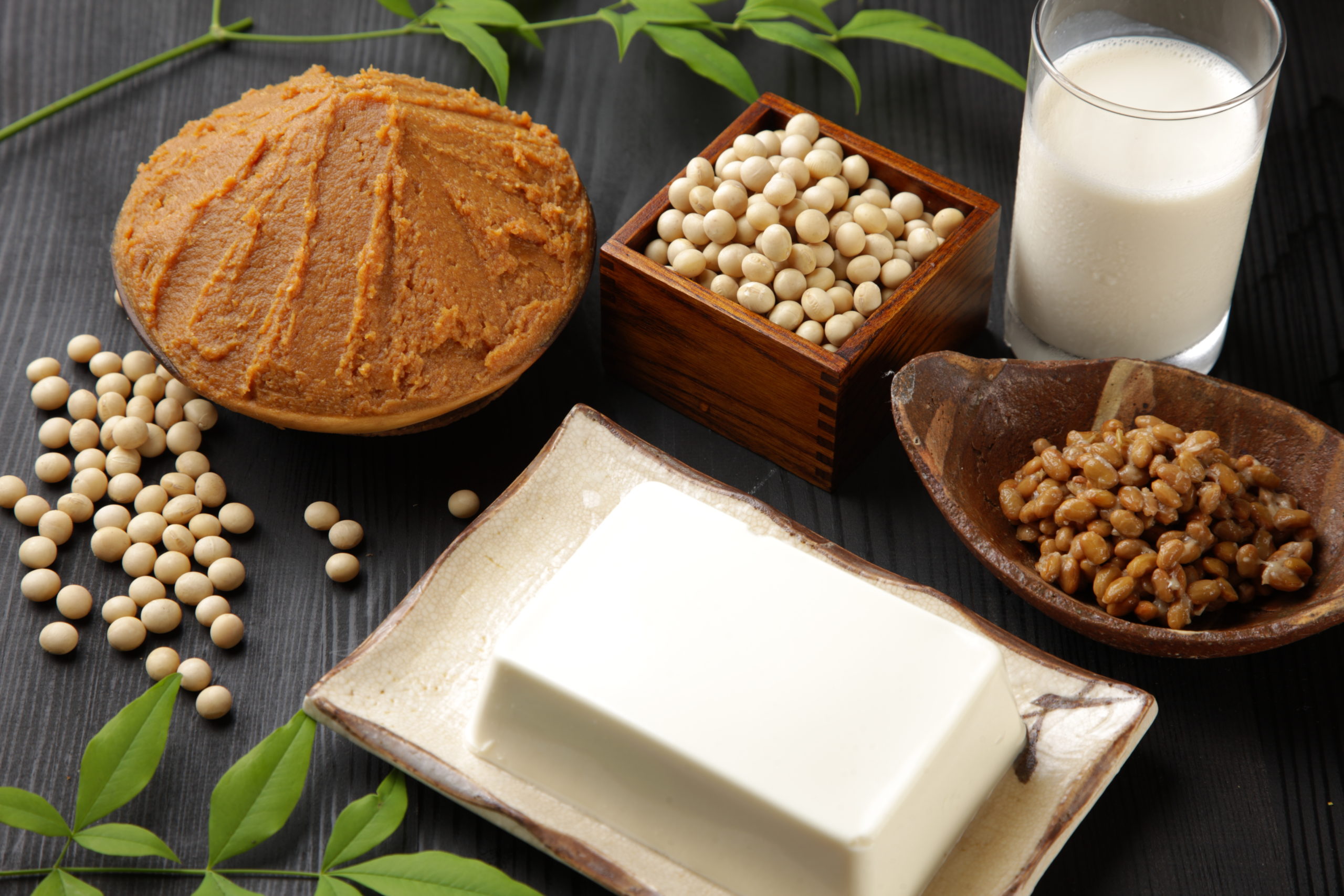
Consuming soy food is one of the most controversial topics pertaining to breast cancer, and many people are confused by the research and recommendations.
Every breast cancer patient I have ever worked with has asked me the same question…“Should I be avoiding soy?”
The online space is also confusing when it comes to the answer to this question. And unfortunately many practitioners aren’t even in agreement.
Today I want to get to the bottom of this debate for you. Let’s dive in!
Why All The Fear?
In one word…estrogen! Estrogen is the primary female sex hormone. It is responsible for the development and regulation of the female reproductive system.
In a healthy body, estrogen is produced and regulated in balance with the other sex hormones, it is used as needed, it is metabolized through the liver, and then eliminated via the kidneys.
Estrogen levels are naturally at their highest in women of reproductive age and gradually decline as women enter menopause. Men also have estrogen, although generally at much lower levels than women.
Estrogen is produced primarily by the ovaries, but also in smaller amounts by the liver, adrenal glands, breasts, and fat cells.
In addition to regulating reproduction, estrogen has other actions in the body as well:
- It influences the brain and enhances cognition & mood
- It helps to maintain bone density
- It supports heart health
- And it stimulates the mobilization of immune cells
Here’s where the fear comes in! Estrogen is also implicated in the development of Estrogen-Receptor Positive (ER+) Breast Cancer. And soy contains plant chemicals that mimic estrogen in the body; these are called phytoestrogens.
Since high levels of estrogen increase risk for ER+ breast cancer, thus the debate about avoiding soy. Before we talk about soy though, I think we need to consider that we are exposed to “estrogens” every day in our environment. And I would argue that these sources of estrogen are far more dangerous than soy.
Xenoestrogens
Xeno literally means “foreign”. These are chemicals found in the environment that mimic the effects of estrogen in the body. They interact with estrogen receptor sites and contribute to estrogen excess & hormonal imbalance.
Unfortunately in our increasingly toxic environments, our exposure to xenoestrogens is at an all time high. In my opinion, this could very well be part of the reason we see higher levels of breast cancer in industrialized countries.
Here is a sampling of where you might find these xenoestrogens:
- Pesticides, herbicides, and fungicides
- Plastic containers & wraps
- Creams and cosmetics that contain ingredients such as parabens and stearalkonium chloride
- Nail polish and nail polish removers
- Surfactants
- New carpet
- Dry cleaning & fabric softeners
You can read more about how to minimize your exposure to these toxins here: Protecting Your Family From Hormone Disruptors.
Plants Offer Protection
Now let’s get back to the question of soy and phytoestrogens. Do the estrogen mimicking chemicals in soy create the same issue as xenoestrogens?
The biggest difference is that plant-based estrogens may actually protect us from more harmful estrogens like the ones listed above. When a phytoestrogen binds to an estrogen receptor it prevents a stronger estrogen from binding and actually turns off the growth stimulating effects of real estrogen.
Let’s take a look at what the research is showing.
Risk Reduction
The most extensive population studies on this issue have been conducted in China. The Shanghai Women’s Health Study surveyed more than 70,000 Chinese women about their health and food intake, including soy. Here is a sampling of what the research has shown.
- When soy is consumed during childhood and/or adolescence, the risk of developing breast cancer is markedly reduced.
- In China, women who ate the most soy had a 59% lower risk of pre-menopausal breast cancer compared with those who ate the lowest amounts of soy. Risk was 43% lower when soy was eaten during adolescence.
- Soy intake is also helpful in those who carry the BRCA gene, as 1 study showed a 27% breast cancer risk reduction in people with normal BRCA genes AND a 73% risk reduction in carriers of BRCA gene mutations.
- Phytoestrogens bind to other types of receptors that can turn off cancer gene expression. Phytoestrogens have antioxidant, antiproliferative, antimutagenic, & antiangiogenic properties.
- Several studies concluded that the intake of whole soy foods and/or isoflavones reduced the risk of other types of cancer too; lung cancer, colorectal cancer, and prostate cancer.
Survivorship
Okay, so soy & isoflavone intake may help reduce the risk of developing breast cancer. But what about those who have already been diagnosed? Many oncologists are telling breast cancer patients to avoid soy. Is this really necessary?
After a diagnosis of breast cancer, women who eat more soy-based foods actually have a better chance at a long, healthy life. They are less likely to have a recurrence and less likely to die from breast cancer than women who skip soy. Here is what the research is showing:
- A recent study looked at more than 6,200 American and Canadian women with breast cancer. Those women who ate the highest amounts of isoflavones had a 21% lower risk of death. What’s interesting & encouraging about this study is that North American women eat a lot less isoflavones than women in Asian countries; typically 2-6 mg per day compared to 40-50 mg per day. They still received a benefit even at this lower dose!
- Another study looked at 5,000 Chinese breast cancer survivors and found that women who consumed the most soy had 32% lower risk of recurrence & 29% lower risk of death.
- And yet another study followed 1,954 American women who were breast cancer survivors for six years and they found that women treated with tamoxifen with the highest intake of isoflavones had a 60% lower risk of recurrence. Cell and animal studies have also shown that adding soy food nutrients to tamoxifen inhibits the growth of breast cancer cells. So no reason to fear that soy might interfere with tamoxifen or similar estrogen blocking medications.
You can read more about the research regarding Soy & Breast Cancer here: (1, 2, 3, 4, 5, 6, 7)
Not All Soy Is Equal
Here’s the kicker…because let’s be honest, there’s always a caveat. Not all soy is created the same. And because of this, not all sources of soy are going to be good for you.
When we look at the soy being consumed in Asian populations, this is typically from traditional whole food sources of soy (natto, tempeh, miso, tofu), not the processed soy foods (soy burgers, soy cheese, soy hot dogs, soy protein bars, etc) we commonly see in the United States.
We simply do not know the impact of these processed forms of soy on our health. Knowing the nature of processed foods, I’m inclined to think that they’re probably doing more harm than good.
The other issue is that much of the soy in the United States is coming from non-organic, GMO sources. Glyphosate, which is a common pesticide used on GMO soy, has been shown to activate estrogen receptors at only a few parts per trillion! And in cell cultures this was shown to increase the growth of ER+ breast cancer cells. That is not worth the risk in my opinion.
So what foods should you be trying to include in your diet? And how much?
First, choose only organic sources of soy. Based on the research, the goal is to get at least 10 or more milligrams of isoflavones every day. This can easily be accomplished with 1-2 servings of soy each day. Here is a list of whole food sources of soy to help you get started.

Fermented soy foods, like natto, tempeh, & miso, tend to be easier to digest and may result in less intolerance or sensitivity to soy.
There are other plant foods that contain phytoestrogens and can certainly be added to your diet as well. Their isoflavone content is not as high as the levels found in soy, but they still offer plant protecting benefits.
- Flax Seed
- Sesame Seed
- Mung Beans & Mung Bean Sprouts
- Garbanzo Beans & White Beans
- Alfalfa & Alfalfa Sprouts
- Yams & Sweet Potatoes
- Oats
- Lentils
- Barley
- Apples
Take Home Message
Don’t be afraid of soy! In fact, I encourage you to eat it. Especially your daughters and granddaughters if breast cancer runs in your family.
Organic, whole food sources of soy will be your best choice. Choose options like natto, tempeh, edamame, miso, and tofu. Eating 1-2 servings a day is recommended.
Other sources of phytoestrogens & isoflavones are also great to add in; so mix it up!
On the flip side, take steps to reduce your exposure to xenoestrogens while supporting your body’s ability to metabolize and eliminate estrogen. Read more about how to boost your body’s detoxification pathways here: Detox 101.
By taking steps to maintain a healthy weight you will also be decreasing your exposure to excess estrogen. Remember that fat cells produce estrogen and this may help to explain why obesity is a major risk factor for breast cancer.
Finally, be mindful of the fact that traditional Asian diets are not only high in soy, they also include a lot of other anti-cancer, inflammation lowering foods…like plant-based meals, green tea, & fish.
It will never be just one thing that keeps us healthy and free of cancer. We must always look at the whole picture and combine diet and lifestyle choices that work synergistically to keep cancer at bay.
